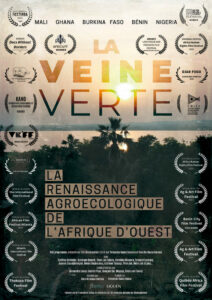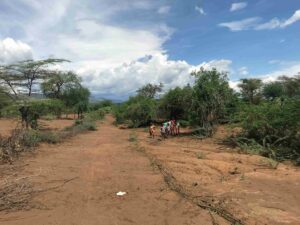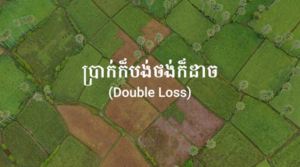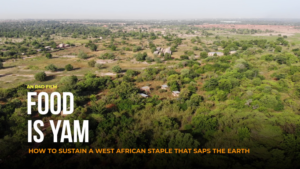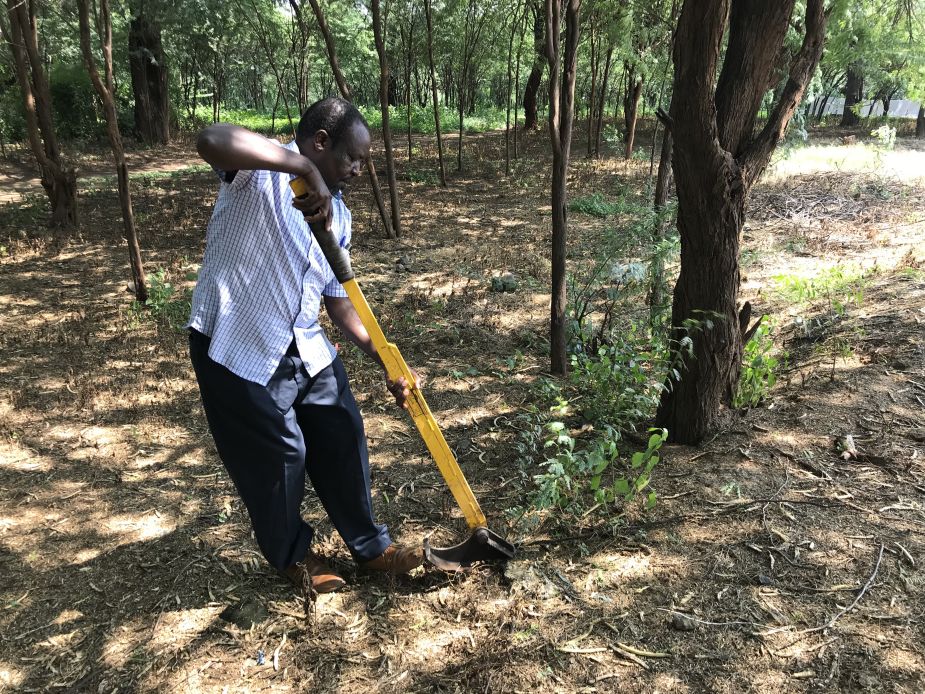
Rooting out invaders: A strategy against exotic trees in East Africa
On the northeastern shores of Kenya’s Lake Baringo, in the heart of the Rift Valley, two warring tribes agreed to put aside years of conflict in the name of conservation.
That was about a decade ago, and the peace pact came in good time: what they didn’t know then was that a common enemy was already heading their way.
The people of Pokot and Il Chamus communities came together under the auspices of the Ruko Conservancy. They wanted to find common ground by sharing land and making livestock grazing sustainable while conserving wildlife – including an effort to bring the rare Rothschild giraffe back to the region.
But at a meeting in July 2019, Ruko board members heard some disturbing news from ecologists working in the area. An unusual invasion was threatening their plans. The enemy was approaching silently – and at pace –from the southernmost part of the lake.
The message was clear: the alien treeProsopis juliflorawas on course to take over much of their shared land. The tribes had to act.
“After that discussion, we were informed by Ruko board members from both ethnic groups that there was a unanimous agreement … to help them implement Prosopis management,” says Urs Schaffner, head of Ecosystems Management at CABI Europe-Switzerland, who led the scientists sounding the alarm.
“If the place is left for the species to invade, there will be conflict.”
Rebby Sebei, Ruko Conservancy
“If the place [is] left for the species to invade, there will be conflict,” says Rebby Sebei, Manager of Ruko Conservancy. “Everyone agrees to this.”
The Pokot and Il Chamus people acted quickly on the scientific advice. In a two-phase operation that began with training, they removed trees and seedlings from the Conservancy. Ruko wildlife rangers and scientists set up monitoring areas for signs of new germination. And a plan for continuous surveillance is now under discussion.
Rooting out invasive species – whether in northern Kenya or elsewhere in East Africa – is a problem that can’t be solved overnight, or by working in isolation.
A ‘selfish’ species
If you let Prosopis trees take hold, they just take over.
“This species…is very selfish,” says Adelina Spiria, a fisherwoman in northern Tanzania. “When it grows somewhere, it prevents the native plants from growing – they just disappear.”
Spiria’s words are backed by the science. According to Schaffner, once Prosopis takes over more than half the land in a particular area, all grasses disappear. And that’s a worst-case scenario for grazing livestock, which local people rely on for their livelihood. “Few other trees and no grass can grow where it grows,” says Mr. Mudei, a warrior from the Pokot tribe.
Feeding on the trees can also harm livestock and wildlife, including the Rothschild giraffe. “If animals eat Prosopis, it weakens them,” adds Samuel Lesiita, a warrior from the Il Chamus tribe.
The trees also use up vast quantities of water from both surface and groundwater sources. And in dryland areas already affected by climate change, that’s a problem. “In Afar Region in Ethiopia, where this tree has invaded 1.2 million hectares in 30 years in one region, it consumes more than half of the overall rainfall in the area – [that’s] just Prosopis,” says Schaffner.
Ultimately, the invasion shrinks communal land available for grazing. And that intensifies conflict because pastoralists end up competing for resources, or moving closer to the edge of their territory.
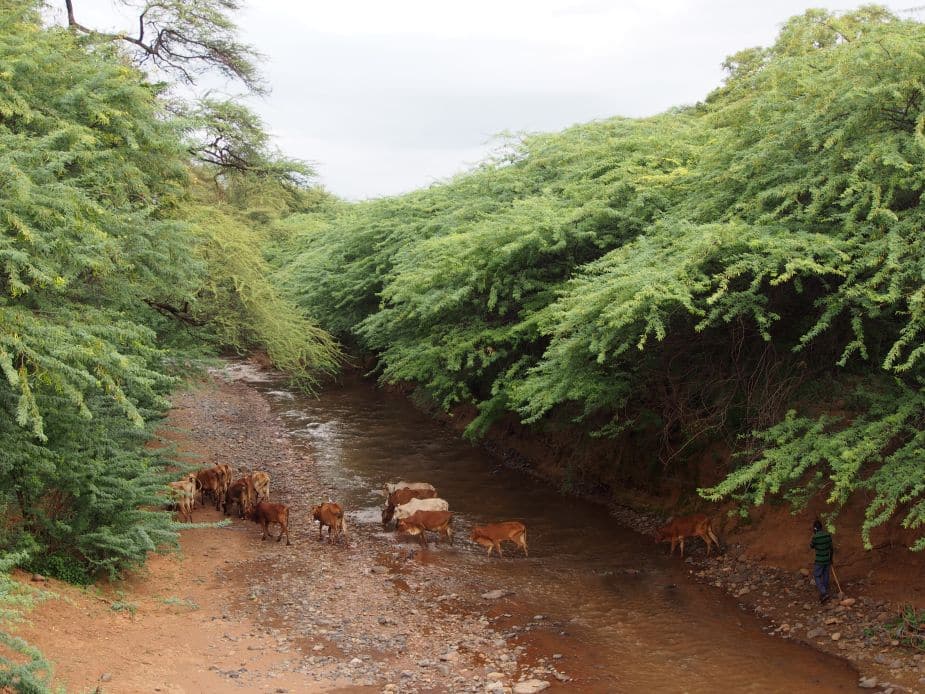
Picture 1:A Prosopis invasion along a creek makes access for livestock almost impossible.
The trees also use up vast quantities of water from both surface and groundwater sources. And in dryland areas already affected by climate change, that’s a problem. “In Afar Region in Ethiopia, where this tree has invaded 1.2 million hectares in 30 years in one region, it consumes more than half of the overall rainfall in the area – [that’s] just Prosopis,” says Schaffner.
Ultimately, the invasion shrinks communal land available for grazing. And that intensifies conflict because pastoralists end up competing for resources, or moving closer to the edge of their territory.
More harm than good
It doesn’t always start out that way. At first, people might like Prosopis trees. Their wood can be used to make charcoal or build fences. It can be burnt for fuel or sold to a local power plant for extra income.
But over time, its sinks in that the risks outweigh the benefits. “We never knew it was a bad species until when it inhibited biodiversity,” says Sebei.
It’s a story of good intentions gone wrong. Back in the 1970s, when it was introduced to the Baringo region, Prosopis was thought ideal because it could withstand dry conditions. Trees and shrubs have a decades-long history of being moved from one continent to another, explains Schaffner, whether to help local people access firewood or to stabilise degraded land. “We’re talking about hundreds of tree species that have been planted by governments, but also by different organisations.”
But for some 40 years now, it’s been clear that the few species which manage to escape their plantations can spread destruction.
Prosopis is among the worst offenders worldwide. And Baringo is one of the most heavily invaded regions in eastern Africa. The amount of land taken over by the tree in this region spiked by more than 2000% over 28 years – first along rivers, then moving to road networks and irrigation canals.
“If you want to deal with invasive species, you can’t just motivate a few agro-pastoralists.”
Urs Schaffner, CABI
Mounting a defence
The Woody Weeds team knew that thwarting the invasion would take science, strategy, and coordination with policymakers and local groups. “If you want to deal with invasive species, you can’t just motivate a few agro-pastoralists,” says Schaffner.
Developed nations battle woody invasive species armed with technology and multi-million initiatives. But low-income countries lag far behind in capacity to tackle the problem, even though they have “some of the most disastrous invasions”, according to Schaffner.
In South Africa, the price tag of damage caused by woody invasive species on ecosystem services is estimated at USD1 billion per year. And it could get worse.
Along with Ethiopia and South Africa, both of which published national strategies for managing Prosopsis trees in 2017, Kenya is now making the right moves, acting on a commitment to fight invasive species made under the Convention on Biological Diversity.
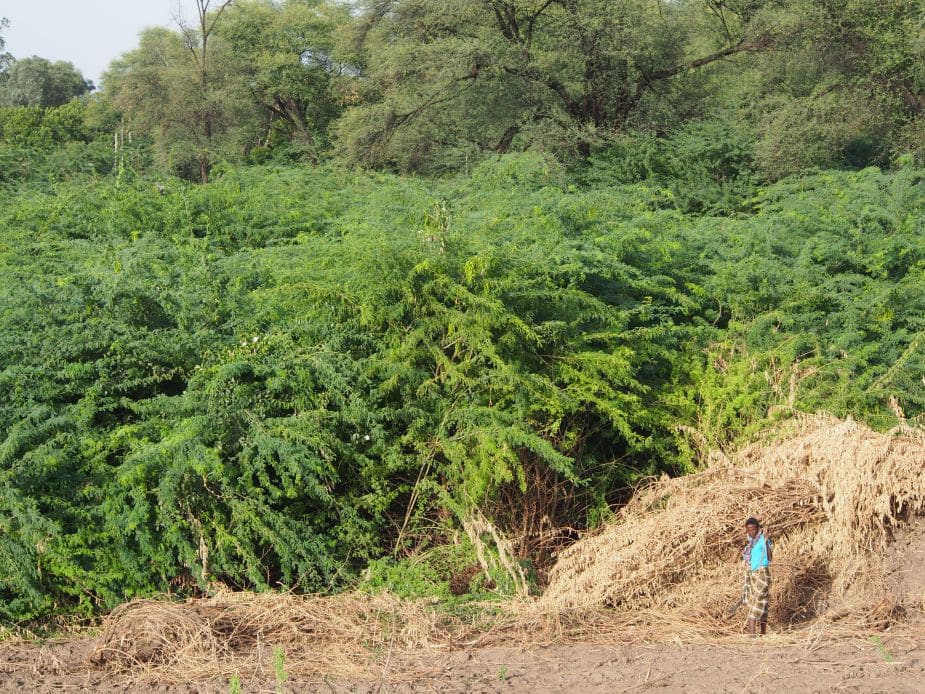
Picture 2: Local people try to mechanically remove dense strands of Prosopis – almost impossible.
Schaffner’s research team started work in East Africa five years ago. Throughthe Woody Weeds project, they set out to understand the impact of woody exotic species invading land in Kenya, Tanzania and Ethiopia, and how best they could be managed.
One of the first steps was to research what different management options would mean for local people and the environment. Could using Prosopis wood slow down or stop the spread? Or should the trees be removed instead –and what’s the best way to do that?
Answering scientific questions such as this one laid the groundwork for managing the problem, a process that involves extensive discussions with local groups and influencing policy. “We were very lucky that we found a lot of support,” says Schaffner.
In Kenya, data generated by the research team helped to sway the government away from a longstanding, contested policy of encouraging local people to use Prosopis as a way to manage the trees. But the research findings were clear: over 15 years, that made no difference to the spread. It was the start of a change in policy.
The project also helped shape the country’s first national strategy for Prosopis over the past year or so, according to Schaffner. Ministers and the President are currently considering testing the strategy in Baringo county first.
That’s not a coincidence:Baringo is also where Woody Weeds plans to test its management strategy.
A joint strategy for a blueprint
“We now have the information on what’s happening, we have to get support from stakeholders to implement [it],” says Schaffner. The team’s proposal to execute the plan was supported by the r4d programme, a joint initiative by the Swiss Agency for Development and Cooperation and the Swiss National Science Foundation.
At the heart of its approach to managing Prosopis is a joint effort – alongside the Ruko Conservancy and other partners – to produce a detailed map showing which parts of Baringo local officials need to prioritise with different management activities.
“What is really worrying is that the area North of Baringo is also suitable for invasion,” says Schaffner. “And once [Prosopis] has invaded this part it can enter the North rangelands” – an area high in biodiversity, where agro-pastoralists simply rely on grasslands to survive.
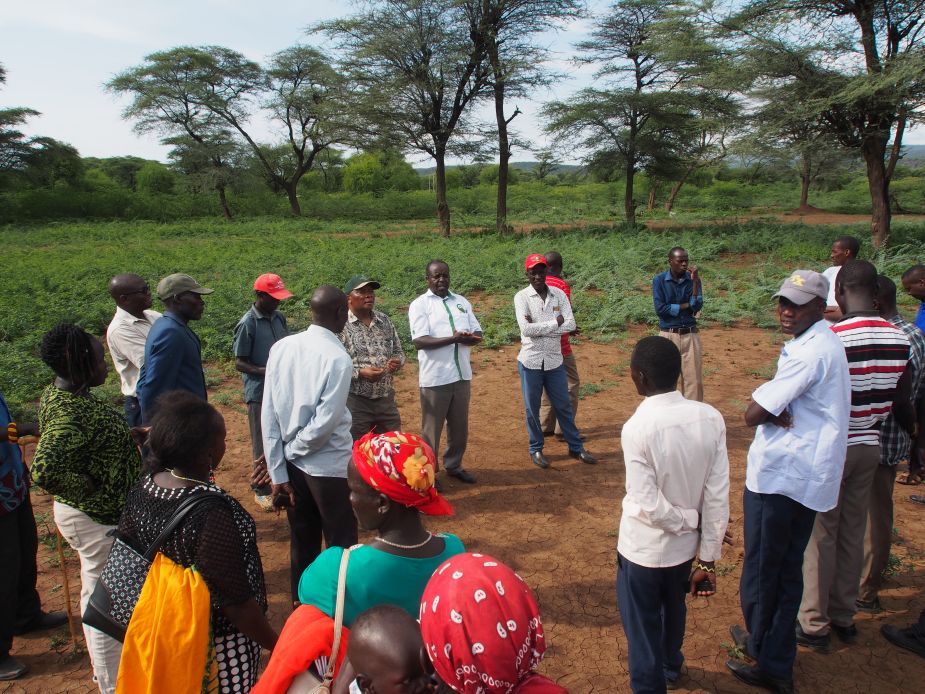
Picture 3: Ruko Board members and researchers inspect Prosopis established in crop fields and grasslands.
The project is aiming for a success story: to build a tool that other parts of Kenya and Africa can use to implement sustainable Prosopis management.
It will take some years to have a verdict. But securing agreement on a clear national strategy in Kenya is a sign that things are on a good track.
“As far as I know, except maybe South Africa, there’s not a single case in Africa where a country has been able to implement a strategy against invasive species,” says Schaffner.
Getting people from different groups and levels of government to talk to each other and agree on what they want to achieve with their land is far from an easy task, wherever you are in the world. In some parts of the continent, there’s also a serious lack of knowledge and awareness about the problem.
National policies with different goals can also undermine progress. Kenya, for example, has a strategy to boost tree cover to 10%. If Prosopis is one of the species in line to achieve it, then that policy could make it impossible to control the invasive tree, according to Schaffner. And the government has not yet registered chemicals or herbicides that could help control new infestations.
The good news, says Schaffner, is that Kenya plans a 10-year implementation phase. “So they are fully aware that this is not something which we’re going to achieve in one year, two years.”
Related Posts
The Green Vein: Agroecology Rising in West Africa
WOMEN EMPOWERED: Vital Work Made Visible
Sources
r4d project:
Woody invasive alien species in Eastern Africa
Transformation Accelerating Initiative:
Woody invasive alien species in East Africa: assessing and mitigating their negative impact on ecosystem services and rural livelihood
Research and Implementation partners:
Kenya Forestry Research Institute (KEFRI); Centre for Training and Integrated Research in ASAL Development (CETRAD); University of Nairobi; CABI Kenya; Centre for Development and Environment (CDE) at University of Bern; CABI Switzerland
Photo credits:
Urs Schaffner, CABI
About the author:
Anita Makri is a freelance writer/editor/producer based in London

